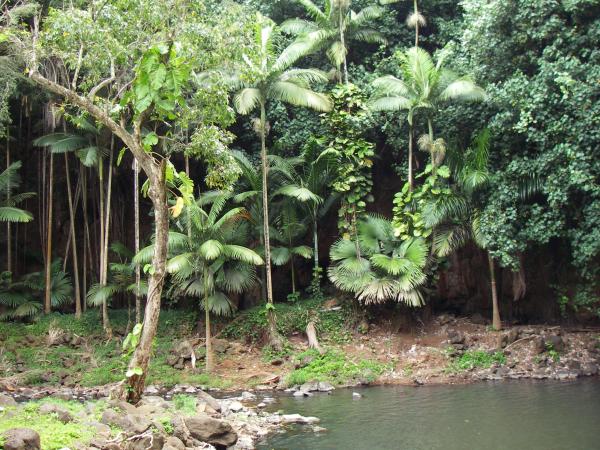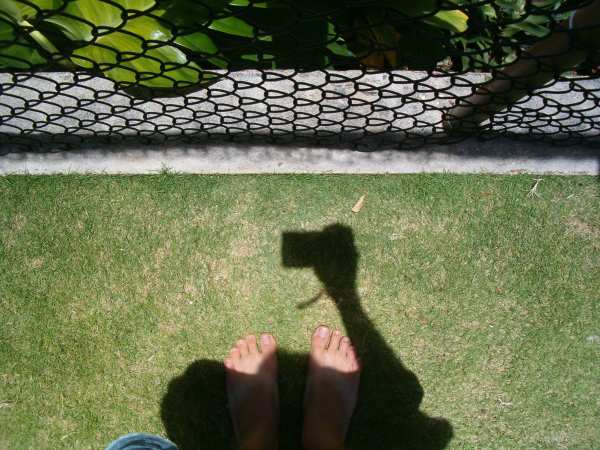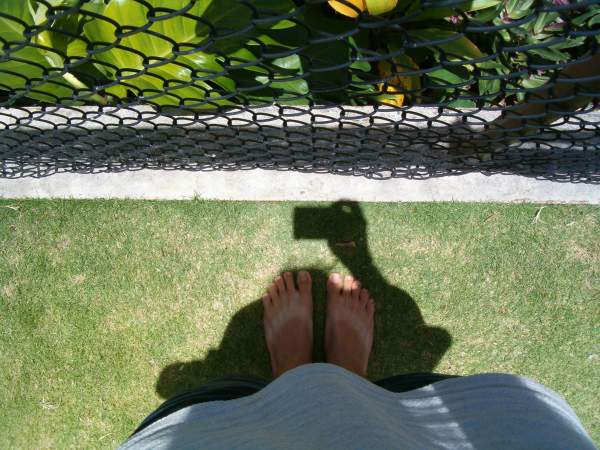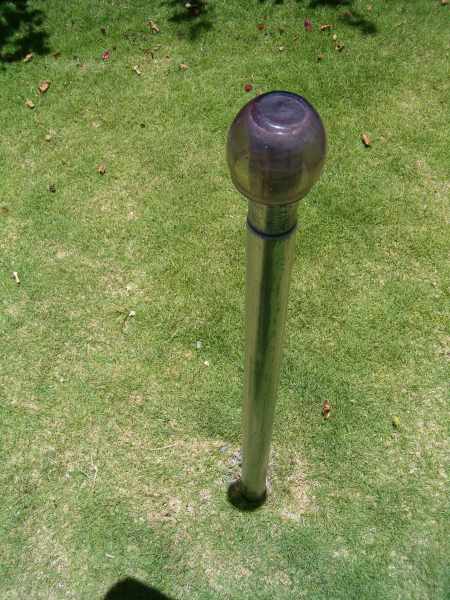Yesterday evening we went on a cool hike with the Sierra Club. One of the hike leaders works at the National Tropical Botanical Gardens (NTBG) on the south shore and can give private tours. So we got to walk around both the Allerton and the McBryde gardens after hours and see parts of the property you don’t usually see on the daytime tours. Both gardens are in Lawai valley between Poipu and Kalaheo, but even locals don’t always know the difference:
- The McBryde Garden is up in the valley and contains the various collections of plants. Plant lovers will be amazed at all the different varieties, some extremely rare and all well marked with tags. The paths are mostly service roads, except for the pretty trail along the stream. There are also a few theme paths: one displays the canoe plants that the Polynesians brought to Hawaii, the other presents various spice plants to your sight and smell.
- The Allerton Garden is located in the lower valley and goes all the way down to Lawai beach. It is more formal with walkways, fountains and pools, yet follows the natural contours of the valley. It also contains many types of plants, but here they are chosen for their aesthetic rather than their botanical merit. Beneath the palms by the beach is the Allerton house which can only be visited through special paying tours.
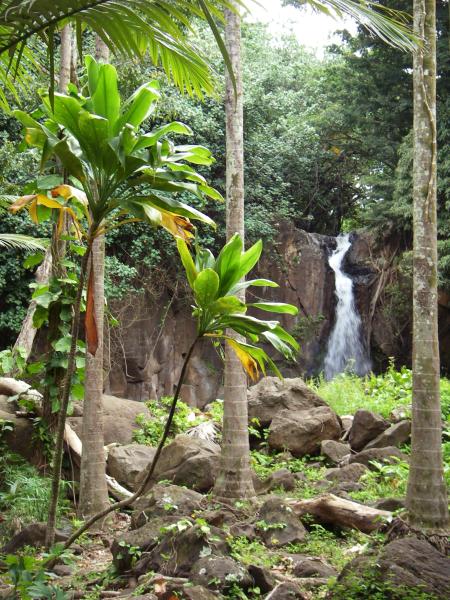
On this hike, we went further up the valley on a closed trail to a little waterfall. Palms from the gardens have spread naturally around the pool at the base of the falls, making a unique setting. I don’t know of any other natural palm-tree ringed pool on the island.


Something else you can’t see on the daytime tours:
a relative of the night-blooming cereus doing its thing.
Update: more info about this plant in a newer post.
The Sierra Club offers this hike several times per year, and I highly recommend it. They are timed to coincide with the full moon, but you’ll probably still want a flashlight. If you’re visiting Kaua’i, be sure to check out their schedule of hikes to see if there is one while you’re on the island. Because it is a private tour, you do have to be a member, but it’s worth joining just to go.





